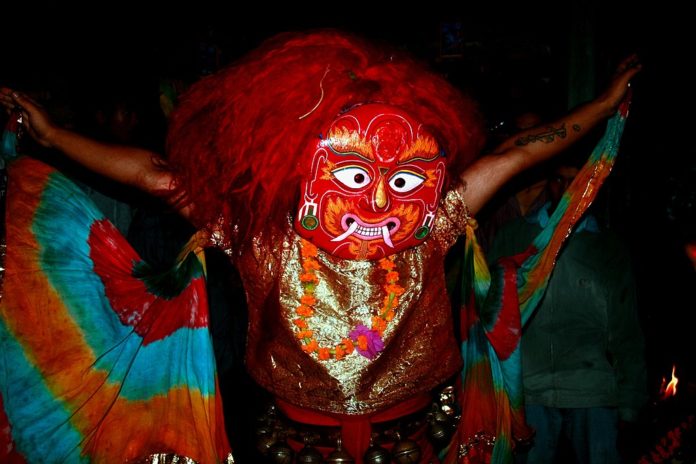1. Yeti
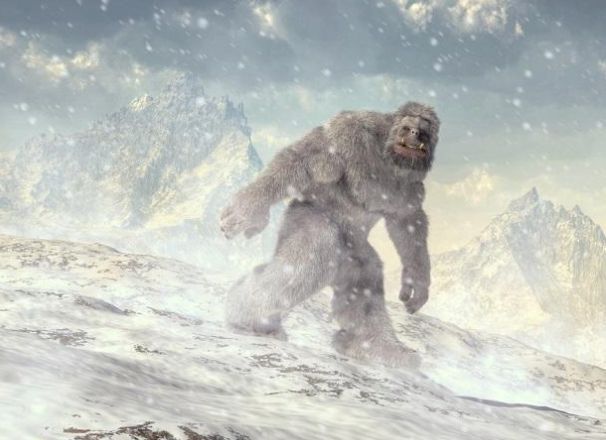
2. Khyah
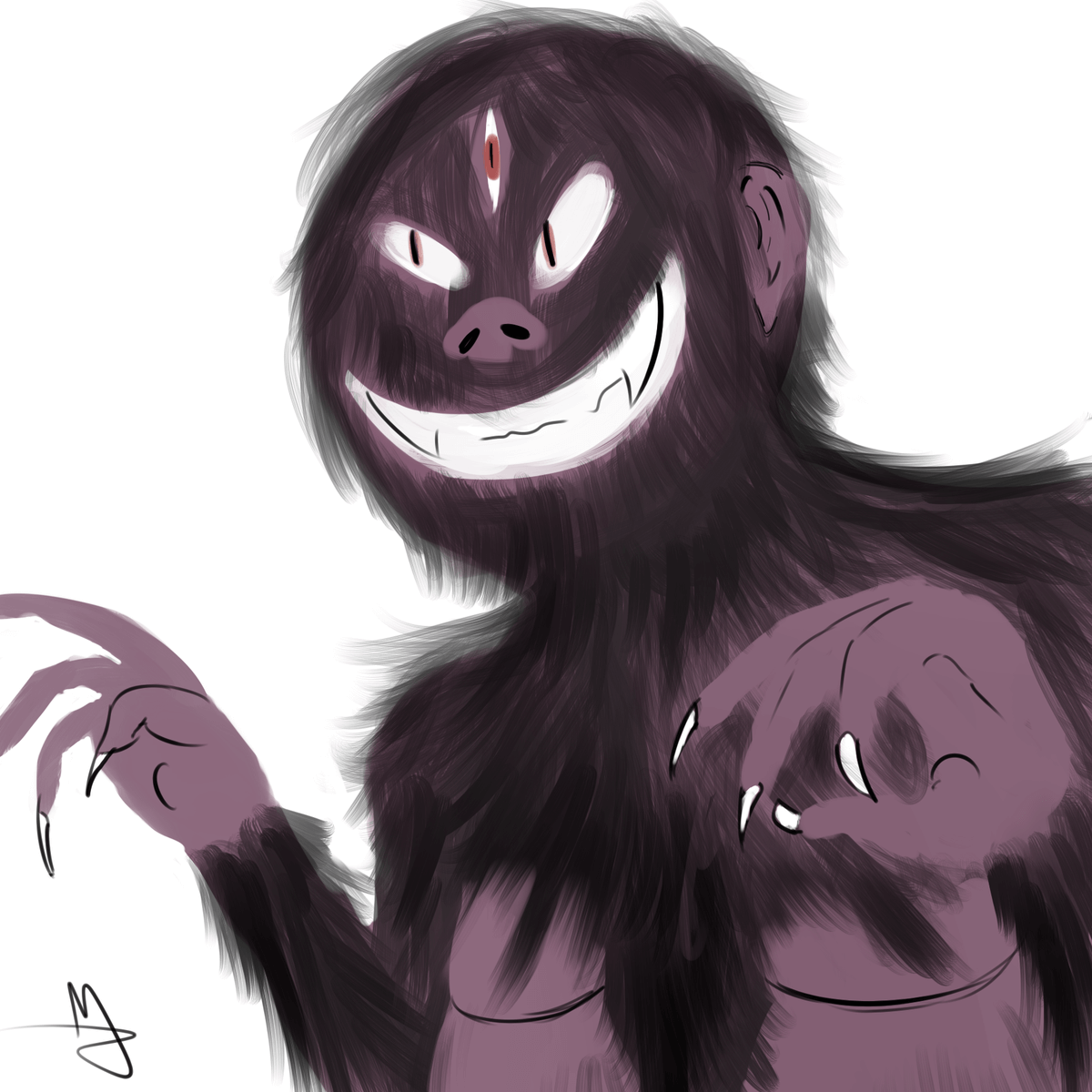
3. Gurumapa
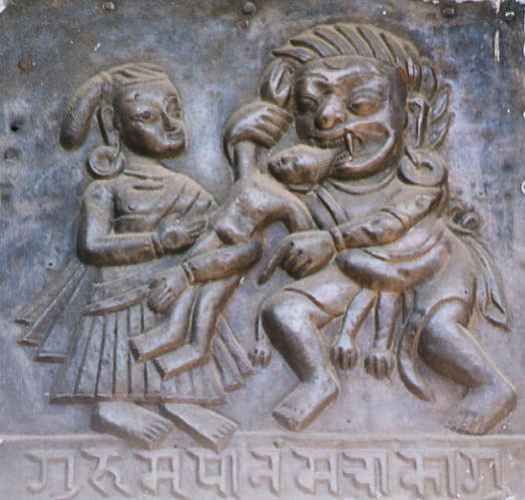
4. Lakhey
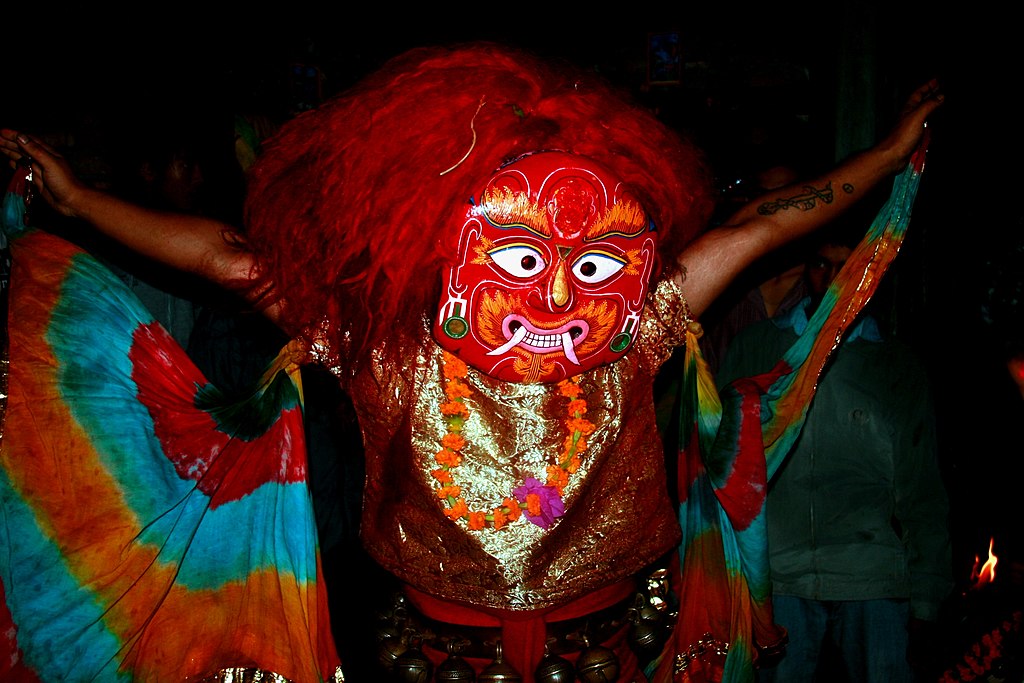
5. Kawa cha
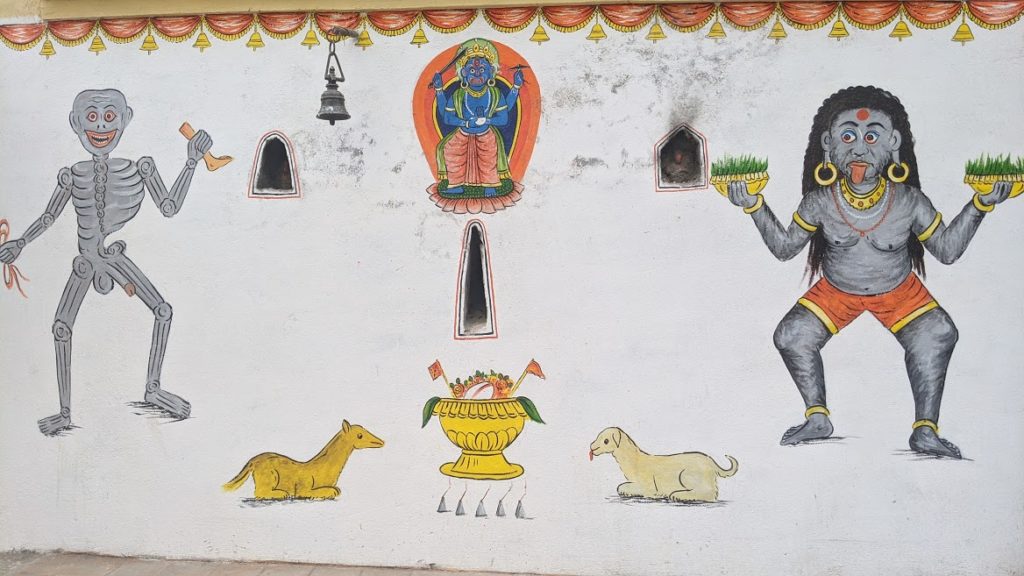
Kawa cha is the literal translation of the Newari word for “skeleton”. The Kawa cha were Nepali mythical creatures that were believed to roam around human settlements and steal kids from their houses through the windows to eat them. It is said that the traditional latticed windows, known as the Tiki Jhya were installed so that the Kawa cha could not steal children anymore. It is also believed that the Khyah and Kawa cha are friends and are often depicted together. When a Kawa cha attempts to steal children, the Khya who lives with the family will coax it to not eat the kids from that household. For the reminiscence of their friendship, a mural has been made in Mahapal, Patan.
6. Garuda
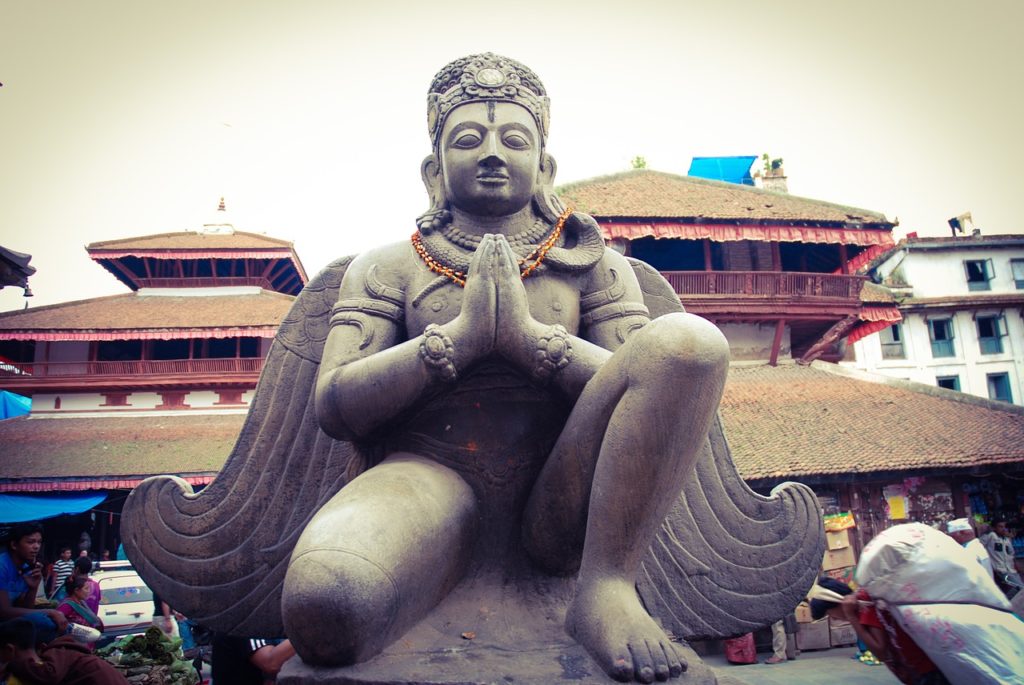
Garuda is a half-man-half-eagle figure found in Hindu mythology. He is often depicted as a man with wings of an eagle or kite and with or without a bird’s beak. He is known to serve Lord Vishnu as a conveyance. The garuda is said to prey on snakes and thus, is the enemy of all snakes. In the Mahabharata, the Garuda is described as the one who devoured evil men. The Garuda symbolizes power and victory over injustice. It is not only part of mythological stories of Nepal but also found in other Asian countries such as India, Thailand, Cambodia, Myanmar and Indonesia.
7. Ma: la (Sky Dragon)
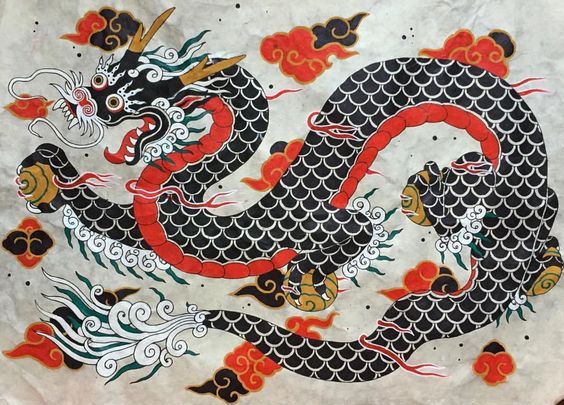
This Nepali mythical creature is believed to be very large in size and has a thunderous roar. The Ma: la is similar to the Chinese dragon, and is a part of the Newa culture and also a well-known mythological figure in Tibetan Buddhism, known as ‘Druk’. This creature is believed to have a long-serpentine body with sharp teeth and claws that resides in the skies of high-altitude areas among the clouds. It is said that the Ma: la appears in the sky whenever there is a heavy thunderstorm and it is associated with rain and rivers. Ma: la is often found carved on the roofs and the walls of Buddhist temples. In addition, dragon carvings are also found on door handles, wall hangings, and household utensils in Nepal as it is believed to protect the homes from evildoers.
8. Singha
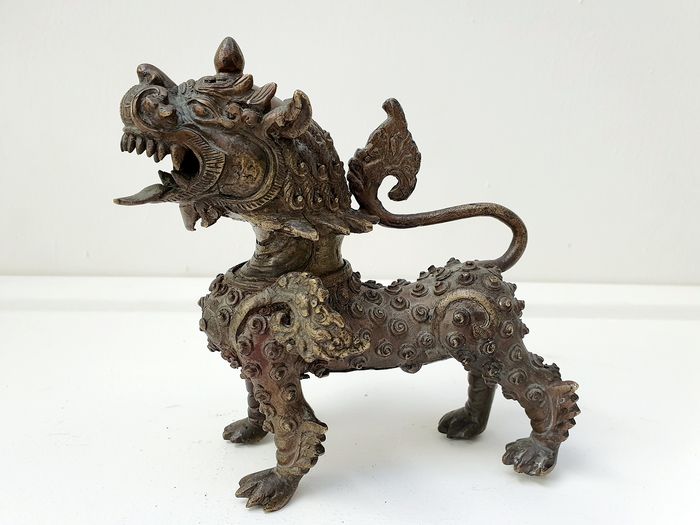
The literal translation to Nepali for Singha is “lion”. Two lion-like stone or metal figures are placed at two sides of entrances of temples in Nepal. The Singha is the mythical lion that is believed to guard the entrances according to the Buddhist religion. Like elsewhere, the lion also represents royalty and leadership, thus it may also represent the link between kings and gods. The Singha wards off negative energy from religious places and is revered as a powerful creature.
9. Cheppu
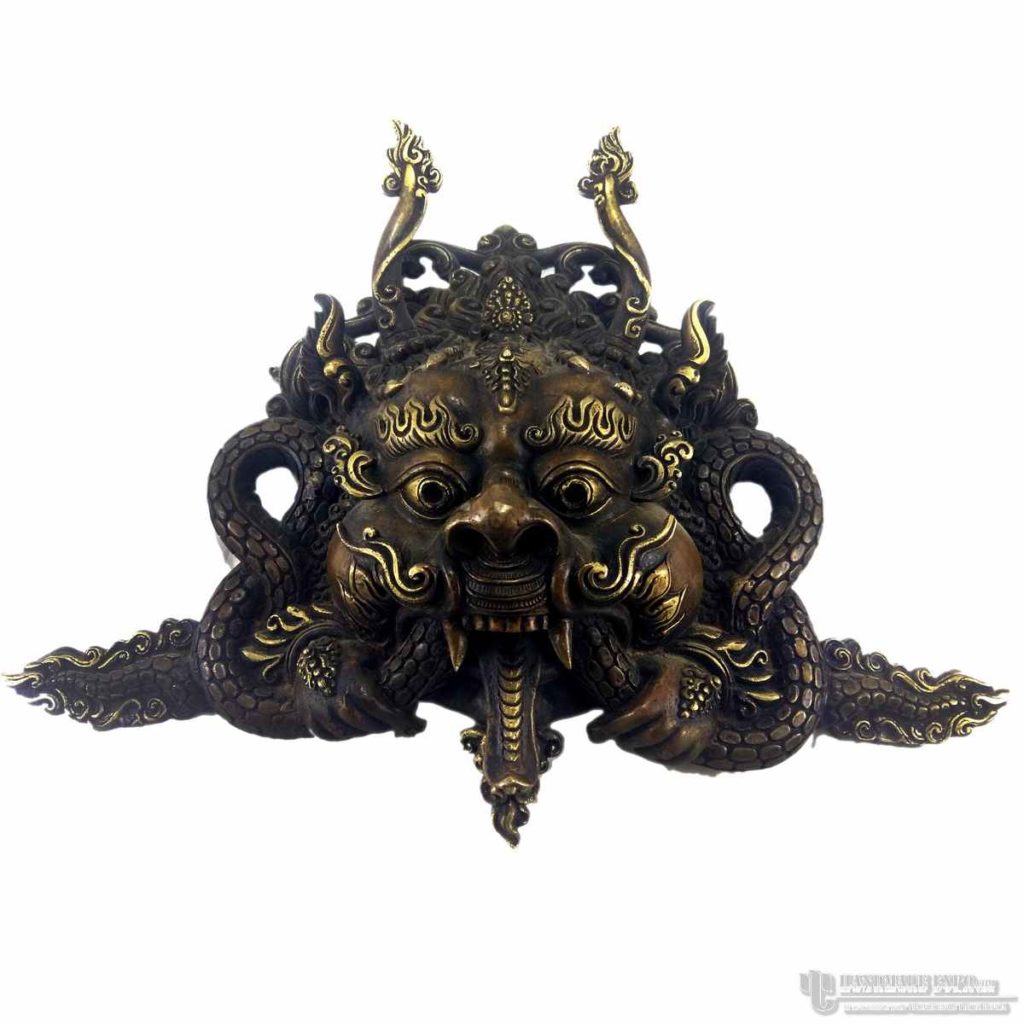
The story of this Nepali mythical creature is tied with the story of the lake that was once Kathmandu. It might be a lesser-known fact, but Kathmandu was once a giant lake. The Cheppu is said to be a very disfigured and dreadful creature who used to live deep inside that lake. When Manjushree came down from Tibet to drain out the lake and allow civilization to flourish in the valley, all the creatures of the lake were forced to move out. But the Cheppu, being ashamed of its appearance, refused to come out of its hiding. Finally, it agreed to come out only when Manjushree promised that he would not look at it. However, Manjushree secretly took a peek at Cheppu when it emerged and even managed to sketch the image of its head on the ground. When the Cheppu found this out, he quickly vanished into the water. Manjushree being ashamed of his deeds was then said to have bestowed Cheppu with the honourable role of watching over the entrances to the temples. Thus, only the image of its head is seen above the temple entrances while his body remains hidden to this day.
10. Hitimanga
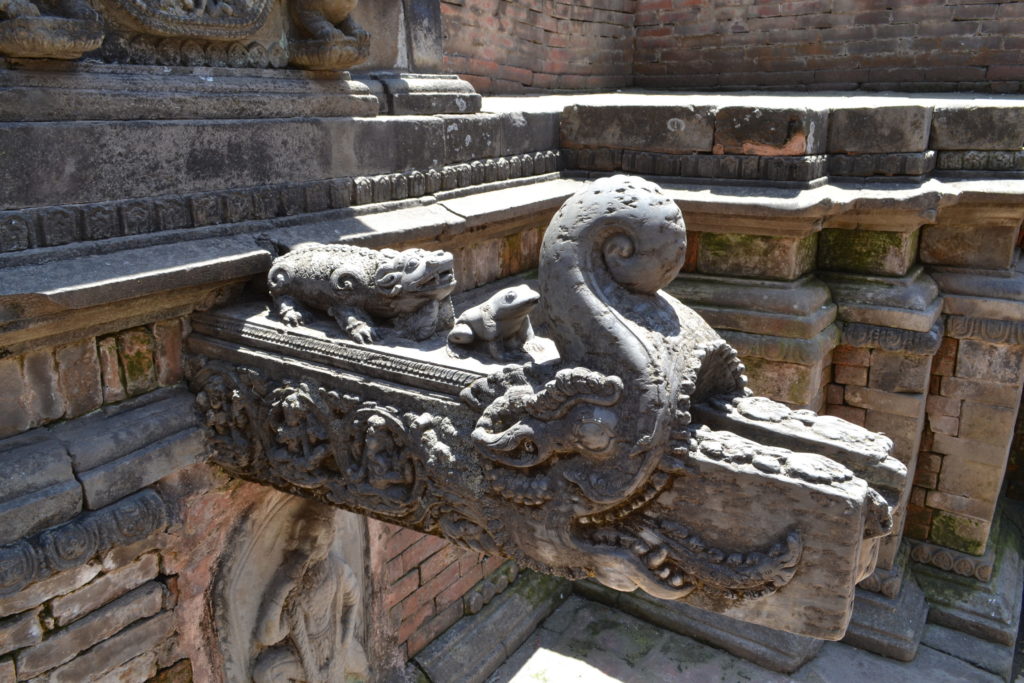
Hitimanga, also known as Makara is usually seen placed over the hitis (stone taps) around Kathmandu valley. The Hitimanga is said to be a hybrid creature, with the lower jaw of a crocodile, snout or trunk of an elephant, tusks, and ears of a wild boar, eyes of a monkey, scales and flexible body of a fish, and tail of a peacock. There is no definite story behind why the Hitimanga is placed over hitis, but this creature is traditionally identified with water and is believed to be the source of existence and fertility. In Hindu mythology, it is equivalent to the zodiac sign of Capricorn. It is also the vahana (conveyance) of the Vedic Water God Varuna and the River Goddess Ganga.
11. Pulu Kishi

If you are a resident from Kathmandu, you have most probably heard about Indra Jatra (Yenya Punhi) and how gloriously this festival is celebrated. You cannot think of Indra Jatra without relating it to the star of the show, the Pulu Kishi. A substantial part of the mythological stories of Nepal, it is a white elephant that is believed to be the pet of Indra, king of heaven, and god of rain. It is believed that Pulu Kisi descended from heaven in search of his master who was captured trying to steal the Parijat flower for his mother. During the festival, a reenactment is done where Pulu Kisi is wandering through the streets of Kathmandu in search of Indra.
12. Dhaplan Khyah
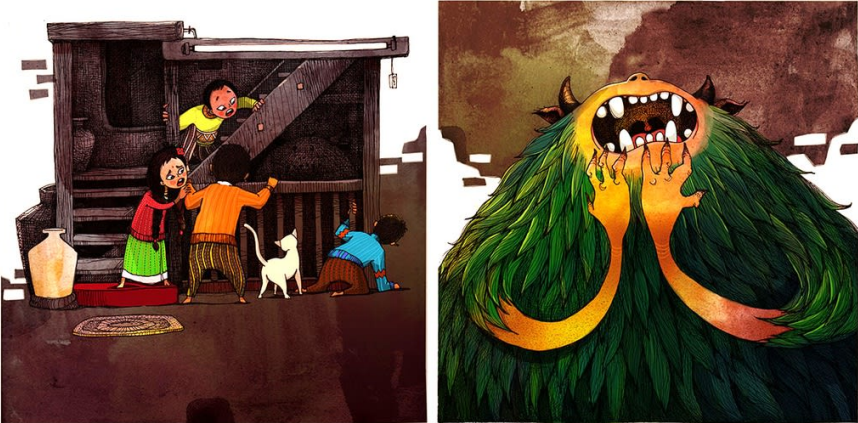
Any Newa person who grew up in Kathmandu must have heard the children’s song about Dhaplan Khya, a large, dark and hairy creature who is always hungry. The Dhaplan Khya likes to live in dark areas of the houses such as under the stairs or in the attic. It is believed to appear only during night time as it is afraid of the light. As the children’s song goes, the Dhaplan Khya arrives in the evening and goes around asking children for a feast. When the children provide the feast and ask Dhaplan Khya if the food has filled him up, the never-satisfied creature replies “No”, and asks to eat the children instead. Dhaplan Khya is a popular song, that was used to scare children to stop them from misbehaving.



